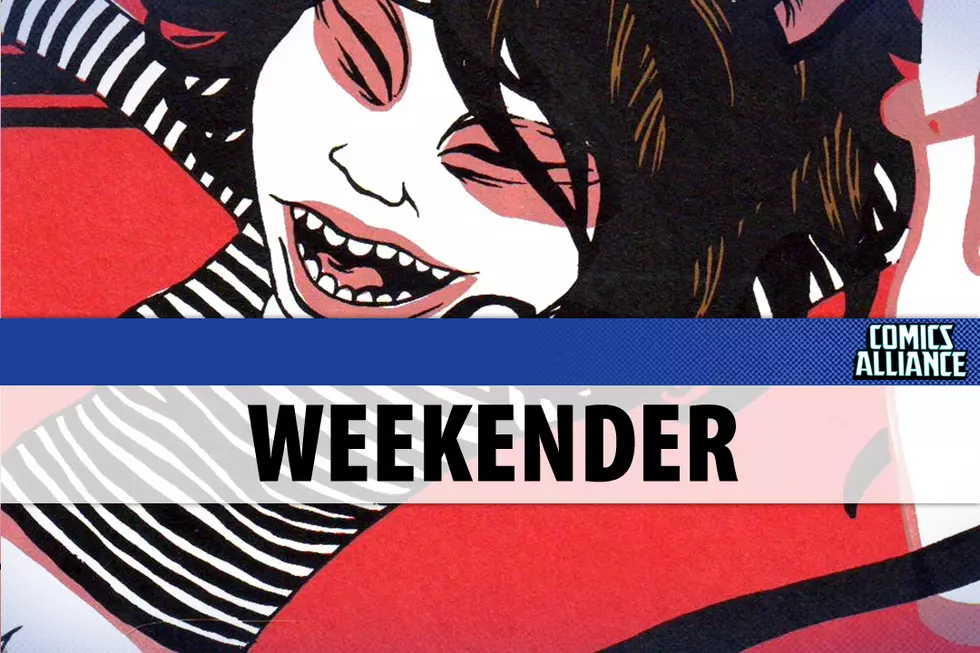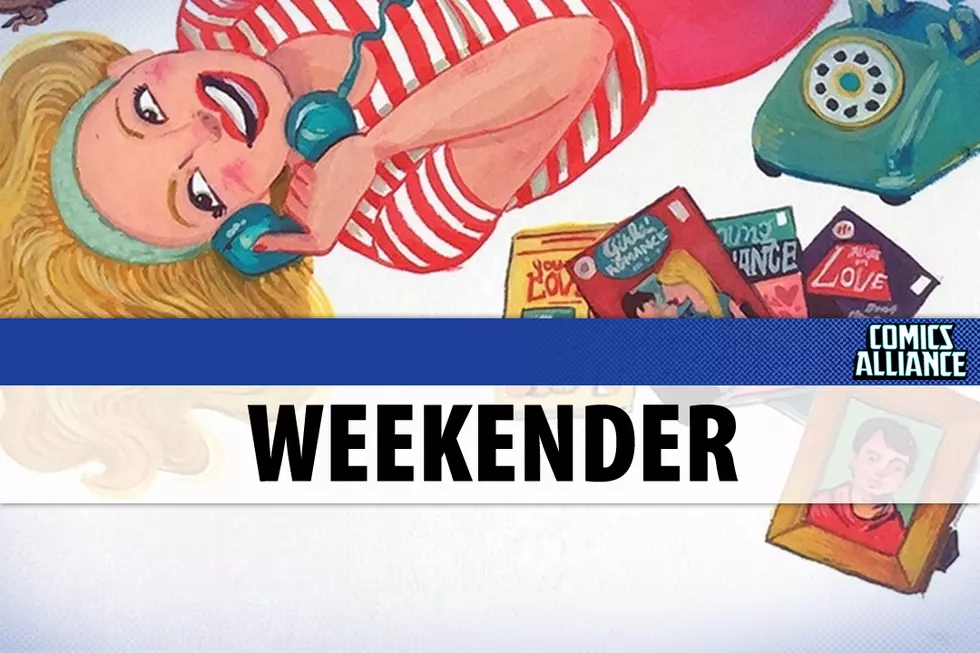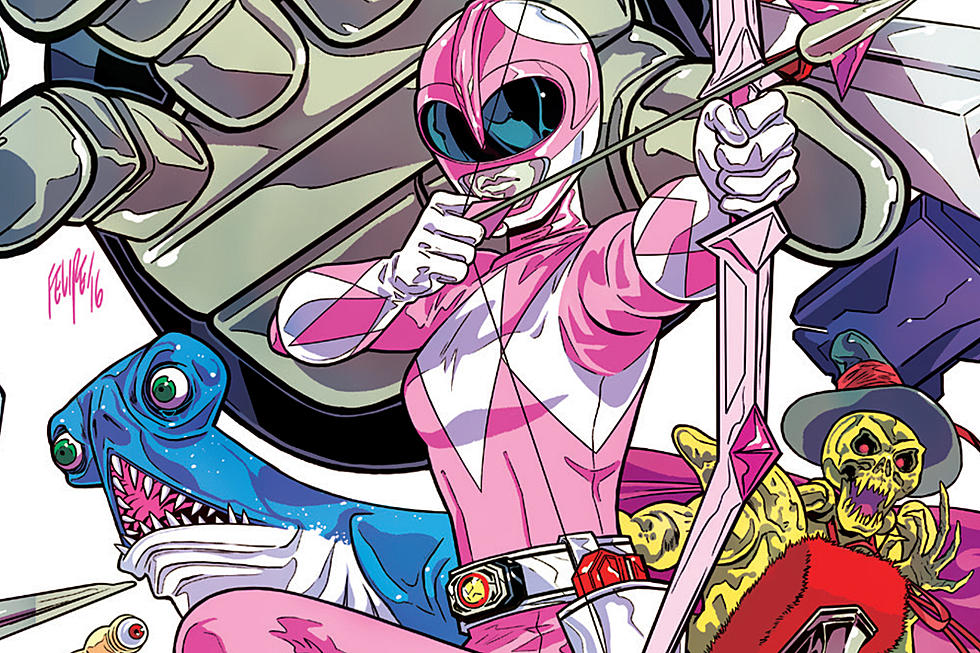![What Is San Diego Comic-Con For? [Opinion]](http://townsquare.media/site/622/files/2013/08/sdccmain.jpg?w=980&q=75)
What Is San Diego Comic-Con For? [Opinion]
San Diego Comic-Con is the big show. For consumers of nerd culture it's E3, the Super Bowl, the Oscars, Cannes and prom night all at once. It's where our people go. Every year it brings together vast crowds of fans of comics, movies, TV shows, toys, games and more to stand in long lines, push through dense crowds and empty their wallets. It makes a lot of people happy. It makes a lot of people money.
But is there anything more to the show than that? Does it occupy an important place in comics culture beyond the value we attach to it for its scale? What is San Diego Comic-Con actually for?
If you're not sure you understand the question, let me offer some possible answers. Is SDCC a celebration of the comics art form? Is it a place to discover new artists, new works, new publishers? Is it the networking hub for the industry, for emerging and established creators alike? Is it the event that sets the agenda for the coming year in comics?
Let's take those ideas one by one.
Is San Diego Comic-Con a celebration of the comics art form?
It's well observed by this point that Comic-Con is not just a comic convention. In fact it never has been - non-comics sci-fi authors were star guests from the earliest days. Nonetheless, there was a period in the '00s when fans seemed especially concerned that comics would be flooded out of the show by other, wealthier industries.
That hasn't happened. Comics still occupy a substantial portion of the floor and the program. The industry appears to be in good health, showing signs of stable and sustainable growth and increasing market diversity. The industry's ties to big media properties like Avengers, Walking Dead and Lego ensure that comics feel more integrated into the broader landscape than ever before. Comics are not going to disappear from Comic-Con.
Having a presence is not the same as being celebrated. Creating a showcase requires an artistic agenda and a degree of curation that is not evident at Comic-Con. The show has guests of honor who get free tables, free hotel rooms and their own spotlight panels, but they don't get good tables or heavy promotion, and their appearances are not tied to book launches. Beyond that, there's no sense that the show contrives to present fans with any particular view of the industry, nor with a comprehensive view of its breadth and potential.
Is San Diego Comic-Con a place for discovery?
Can readers go to SDCC to find new artists, new works, new publishers? Some new books do debut at the show, but there's no easy way to identify those debuts beyond going from table to table. New publishers hoping to make an impression will struggle to get heard or seen in the scrum of the floor. New artists are unlikely to make an appearance other than at their publisher's table, given that tables are expensive and tough to come by. There are other shows where it's easier for a newbie to make an impact. Indeed, any other show would offer an easier chance to make an impact.
But there's "new" and then there's "new to you". You might find a new favorite at the show from an established creator whose work you've never seen before. That's really what Artists Alley is all about.
Yet Artists Alley at SDCC feels increasingly marginalized. It's stayed about the same size for the last few years, with an average of about 200 exhibitors, but it occupies a low traffic spot at the eastern extreme of the hall. Artists Alley would benefit from being in a place where people stumble upon it, but the prime spots all go to high-paying destination booths that fans would seek out wherever they were located. That seems backwards.
SDCC's Artists Alley looks especially lackluster compared to last year's set-up at New York Comic-Con. Though that Artists Alley was even more out-of-the-way, it occupied a large, airy, inviting hall that became a destination. I would be interested to hear from any artist who had a table at both shows about how their experiences compared, but the NYCC set-up certainly felt more respectful to me, and I can imagine NYCC's Artists Alley growing in stature and appeal every year while SDCC's Artists Alley withers. That would make New York the more desirable show for any artist hoping to make new fans.
Is San Diego Comic-Con a place to network?
That's not a question that matters to everyone, but networking is an important and necessary part of how the industry does business, and in theory it's easiest to do at conventions. If you want to break in to comics, or if you work in comics but want more or better gigs, is SDCC a show you absolutely have to be seen at?
Those are actually two very different scenarios. For working pros looking to meet editors and get more work, San Diego is still a useful place to be, because just about every decision-maker you need to speak to is there. Sure, most of them are networking up-stream too, looking for someone bigger and more important to talk to -- because, again, everyone is there -- but an introduction and a handshake is sometimes all an up-and-comer needs to get in an editor's thoughts.
For a creator trying to break in to comics, forget it. San Diego is a terrible place to try to make an impression. Undiscovered creators are the smallest of small fry, an indistinct multitude at an event where much bigger names are struggling to get five minutes with the people they need to talk to. Where portfolio reviews used to be part of the scene, many publishers no longer offer face-to-face reviews. DC didn't conduct any portfolio reviews at all this year. The clear implication is that publishers don't even expect to find talent at San Diego.
Does San Diego set the agenda for mainstream comics for the coming year?
SDCC used to be the show where publishers unveiled their big announcements, their publishing slate for the next 12 months. There's no value in it any more. Other, bigger industries have other, bigger announcements that will grab more attention. Other, smaller shows provide better opportunities for a headline.
There are now enough significant conventions scattered across the year that publishers don't tend to announce much of anything that's more than three months out, and even announcements that might once have happened at San Diego now largely happen in the weeks leading up to it. Image even held its own one-day press event in San Francisco two weeks before the convention, much as some video game companies host press events away from the shadow of E3.
Even Marvel and DC don't have much to say at San Diego any more. A show in the middle of the summer is poorly placed for publishers that rely so heavily on events to get attention. Marvel has won the San Diego press cycle the past few years, but always because of Marvel Studios, not Marvel Comics.
So what is San Diego Comic-Con for?
SDCC doesn't have anything important to say to the industry or the art form. It doesn't make careers. It doesn't make hits. It's too scattered, too big, too raucous to have any measurable influence on anything but sales.
That's enough, of course. San Diego attracts a crowd. It brings them in giddy and laden with cash, and sends them away giddy and laden with merchandise. It will endure for years to come on that basis, and for most attendees that's far and away the most important reason for the con to exist.
In that context, the scale of the show is important. Most consumers of comics, video games, genre movies and TV shows, are lucky to have the means and opportunity to attend one show in a year. It makes sense that they should want to attend the biggest show, the show that offers their best shot at meeting all the creators they care about and picking up all the exclusives they want.
That virtue is not to be sniffed at. Most attendees don't care about the cultural value of the show, its networking possibilities, its place in the industry. They go for the experience, and that's what they get.
In conversations about the comic industry there is a tendency to talk about San Diego Comic-Con as the most important event of the year. If that was ever true, I don't think it's true any more. It's still the big show, but its very size diminishes its relevance. It matters to you if you're there, and that's reason enough for the show to exist. Beyond that, it doesn't merit any special place in comics culture. It's only the big show.
More From ComicsAlliance

![What Happened to All the Movie Panels in Hall H? [SDCC 2016]](http://townsquare.media/site/442/files/2015/07/comicconposter.jpg?w=980&q=75)







